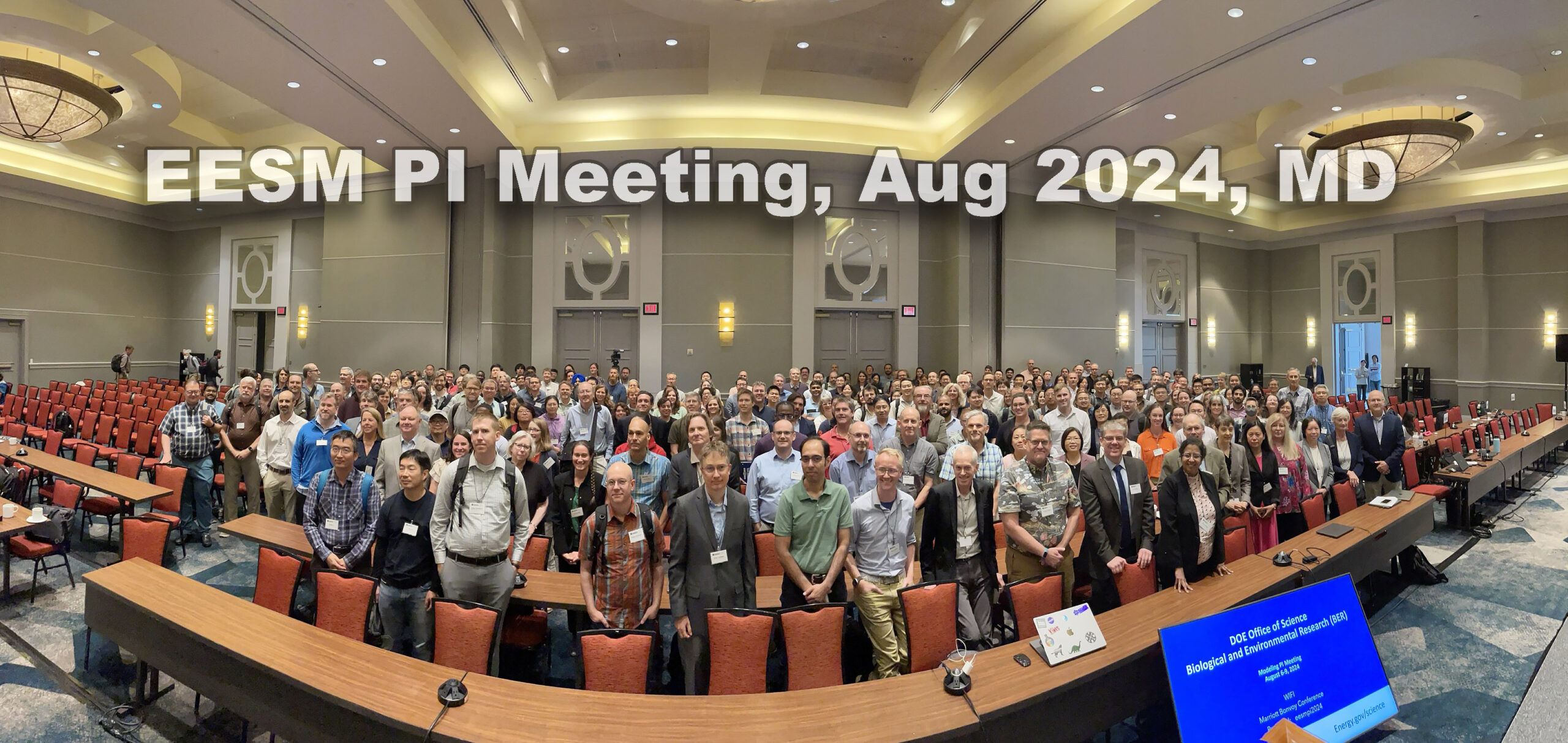Report from EESM PI Meeting
The Department of Energy’s Earth and Environmental Systems Modeling (EESM) Program held its annual Principal Investigators Meeting at the Bethesda North Marriott Hotel and Conference Center in Maryland on August 6-9, 2024.
The main goal of the meeting was to foster and sustain important collaborations among EESM scientists and continue progressing toward programmatic objectives focused on Earth system model development, regional and global model analysis, and understanding of multisector dynamics within the coupled human-Earth system. The meeting also provided BER program managers the opportunity to interact with PIs including early career researchers, exercise programmatic oversight, review progress of DOE-funded university and national lab projects, and identify significant advances as well as future research needs. The meeting included PIs and team members of EESM-funded activities, BER staff, and invited guests and observers (Fig. 1).
The meeting consisted of brief plenary presentations from a representative set of funded projects, topical breakout and poster sessions, and tutorials on tools and resources on topics of broad interest during the Cross-Project Networking Sessions. The goal for the breakout sessions was to identify grand challenges, research gaps, and collaboration opportunities across EESM, BER, and agencies and institutions. The sessions consisted of brief presentations and open, active discussions that highlighted current progress, successes, and collaborations across EESM. There was a brief report back on the major outcome of the breakout sessions at the end of each day, as well as a cross-topic discussion and synthesis session on the last day. A plenary session highlighting Early Career research activities was held also on Friday.
Session Categories
- Water cycle and Hydroclimate
- Urban
- Coastal
- Impacts, tipping points and systems responses and resilience
- Biogeochemistry
- Energy, water and land system transitions
- Extremes events
- High latitude
- Modes of variability and teleconnections, trends
- Strengthening EESM integrated modeling framework—towards a digital earth
- Metrics, benchmarks, and credibility of output and data for science and end users
- Innovative and emerging technologies: ML/AI, digital earth, exascale and quantum computing, advanced software infrastructures
- Methods in model integration, hierarchical modeling, model complexity
- Local/regional testbeds—an integrative framework for multidisciplinary model development and applications
- Model uncertainties, model biases, and fit-for-purpose

Figure 2. EESM PI Meeting organizers, from left, top row: DOE BER Earth and Environmental Systems Modeling Area Program Managers: Xujing Davis, Renu Joseph, Bob Vallario, bottom row: Paul Ullrich, Ruby Leung, Forrest Hoffman, and Nicole Jeffery.
The E3SM project played a central role at the meeting and was regarded as a project with foundational capabilities, helping to integrate other activities. The E3SM presented during two plenary sessions, one focused on the project’s mission and vision, given by the E3SM Executive Committee, and another on updates from all E3SM Groups. There was also an E3SM Informational, Networking session where Chris Golaz gave a presentation on the E3SM model, and Renata McCoy and Jill Zhang talked about the resources and the recently published online tutorial. The E3SM presentations can be found at 2024-08 EESM PI Meeting.
The meeting organizers (Fig. 2), Plenary and Breakout Chairs together with the Topic Leads will develop a Workshop Report focusing on Individual ESMD/RGMA/MSD and cross-programmatic EESM opportunities and challenges. The report is planned to be released in Spring 2025.
Resources
- The EESM PI Meeting agenda
- Presentations
- E3SM presentations in EESMD 2024-08 EESM PI Meeting.
This article is a part of the E3SM “Floating Points” Newsletter, to read the full Newsletter check:



